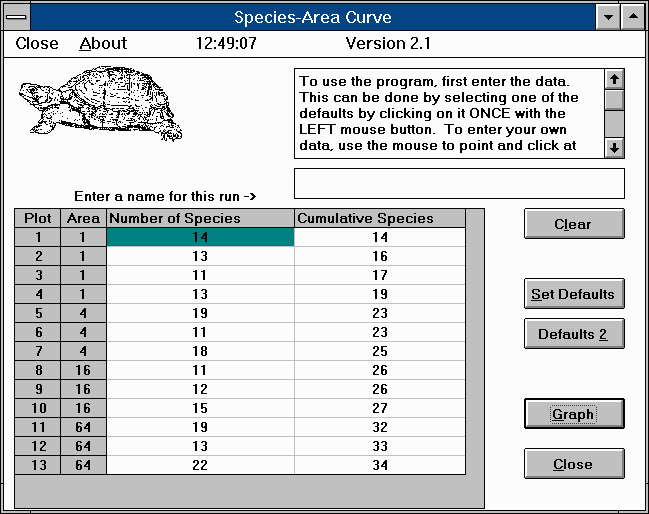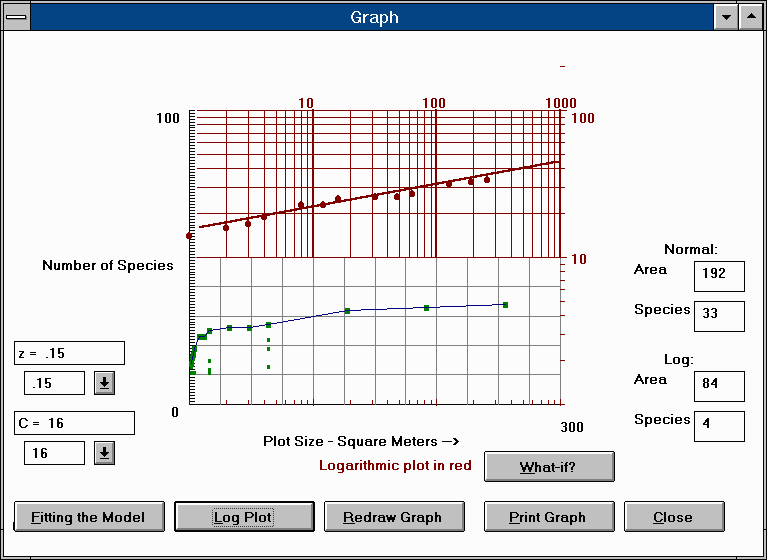Each year, Biology 102 students do a lab inspired by an article in Scientific American:
Horn, Henry S. 1993. Biodiversity in the Backyard. Scientific American, January, 1993, pp. 150-152.
We have modified the concept to work on our campus, and written software to speed the analysis. This is a fun lab that gets the students outside. When onlookers ask what the students are up to, we reply that we are surveying for the new science building!
![]()

An aerial view showing most of the 16x16 meter plot.

Of course, work progresses one square meter at a time. Students work in 4 teams to count how many species are found in each of the various sized plots within the 256 m-2 master plot.

It takes careful, close work, but those who look carefully are rewarded...

...by views like this. Of course, we time the lab to coincide with spring wildflowers, and the groundskeepers help by not mowing the study area for several weeks prior to the lab.

These students are the "curators" of the "museum" They examine each new find, and determine if it is a species that no one has found yet. If it is new, the student who found it gets to name it. Decisions of the judges are final.

This is the opening screen of the program the students use to analyze the data. They record the number of species found in each plot, and the cumulative number of species found to that point, They then click on the GRAPH button....

...to get a graph like this. Data is plotted on both normal and log axes. This lab introduces students to the concept of graphing, log plots, interpolation, best fit, etc. They must determine the species-area curve constants c and Z by changing them in the boxes to the left so that the straight line in the log plot passes through most of the points in the log plot. The species-area curve is the equation:
S = cAZ
This equation can help ecologists predict how many species will be found in a given area, or, conversely, how much area will be needed to preserve a given number of species. To finish the lab, students work in teams to answer a series of questions based on their results.
![]()
Return to Biology 102 Main Page
![]()
Modified 11/22/96